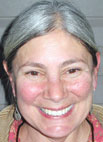
Raising racing Quarter horses is not part of production agriculture, but uses the same basic principles to produce the best and most economically advantageous animals.
Roy Bradley, a resident of Springdale, Ark., is a retired forklift dealer who sold a small repair shop two years ago. He has been in and out of the Quarter horse business twice and is now devoting all his efforts to produce high-quality racing stock. His horse career began in 1966 just after he graduated from high school and bought a solid Quarter horse mare in foal. To keep her, Roy rented a pasture in Fayetteville. Now he leases two farms for a total of 120 acres near Beaver Lake.
“When I started out the second time, I made a mistake by buying good-looking mares instead of focusing on genetics,” Roy said. “I am still making up for that mistake but I’m getting there. You have to buy the best mares you can afford and semen from high powered, proven stallions. With stallions, the name really matters.”
Roy used semen from a stud named Extra Special Effort who retired two years ago at age 30. He was an important stud because his sire, Special Effort, was the only Quarter horse Triple Crown winner in history. Unlike thoroughbred racers, quarter horses run their Triple Crown events when they are only 2, and even though their official birth date is Jan. 1, just like Thoroughbreds, having foals as close to Jan. 1 is not as important.
“I prefer April foals because of the unpredictably of Arkansas winter weather,” Roy said. “My foals can be true horses, that is outside right away running and playing which helps them to develop. Because of that, they are at no disadvantage on the race track.”
Another difference between Quarter horses and Thoroughbreds is registry. Thoroughbred must be 100 percent Thoroughbred while Quarter horses can be bred to Thoroughbreds to increase speed. They are registered on what is called an Appendix Registry that can be upgraded to Permanent Registry by running at a speed index greater than 90. Registry papers are kept at the track, and background in licensing checks ensures that all trainers, owners and jockeys are properly licensed in each racing state.
Mares contribute 60 percent of a foal’s composition making them critically important. A good broodmare needs to have an outstanding pedigree, combined with speed or the ability to produce speed in her offspring. Confirmation and disposition are secondary though still important.
“If a mare has a bad disposition but produces high-quality foals, she’s worth keeping,” Roy said.
Currently, Roy uses semen from young studs with good race records or proven offspring in order to keep costs down. He tries to stay within the $1,500-$2,800 range but is planning to jump to $5,000 to $6,000 for some broodmares starting to show production and speed. Veterinary costs are another part of the financial investment structure. Semen must be cool and shipped overnight on the day that stud farm is shipping. AI requires at least three to four vet visits: checking for readiness, breeding, ovulation and pregnancy. If development is slow, additional visits may be necessary.
Health regimens include frequent worming in addition to rotational grazing, annual mare vaccination for sleeping sickness, tetanus and West Nile virus and foal care including naval doctoring and a tetanus shot. Roy doesn’t worm his colts and fillies until they are weaned at about 5 months. Additionally, Roy uses fly bayte in the barn areas, which is very effective. Nonetheless, he is planning on adding chickens to help with the fly problem while having the added benefit of fresh eggs.
Just like show cattle or other livestock, racing quarter horses require excellent feed. The broodmares graze on pastures with mixed grasses and clover though they are pulled off fescue 60 days before foaling to prevent problems with the placenta and with milk production. All horses in stalls or lots, those starting training or being prepped for sale, are fed Bermuda and alfalfa hay supplemented by 14 percent protein and 6 percent fat pellets twice a day. Well water is used for the barns and lots, with all horses having access to well water though some pastures have spring fed ponds. Roy said, “If I buy another place, I won’t use ponds at all because cleaner water is better water.”
Roy owns six broodmares outright and is in partnership with pharmacist Danny Smith from Goshen, Ark., with others. Future plans include retaining some fillies from proven mares in order to slightly increase herd size in conjunction with semen from stallions with better name recognition.







